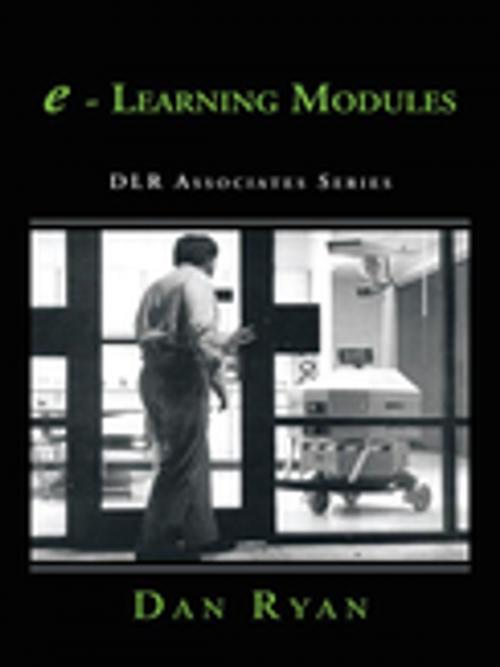E - Learning Modules
Dlr Associates Series
Nonfiction, Reference & Language, Education & Teaching, Teaching, Teaching Methods| Author: | Dan Ryan | ISBN: | 9781468575200 |
| Publisher: | AuthorHouse | Publication: | June 20, 2012 |
| Imprint: | AuthorHouse | Language: | English |
| Author: | Dan Ryan |
| ISBN: | 9781468575200 |
| Publisher: | AuthorHouse |
| Publication: | June 20, 2012 |
| Imprint: | AuthorHouse |
| Language: | English |
The term e-Learning is a neologism for CSCL systems that came about during the emergence of website e-learning modules. From an e-learning perspective, conventional e-learning systems were then based on instructional packets, which were delivered to students using assignments. Assignments were evaluated by the instructor. In contrast, the new e-learning places increased emphasis on social learning and use of social software such as blogs, wikis, podcasts and virtual worlds such as Second Life. This phenomenon has also been referred to as Long Tail Learning . E-learning by contrast to e-learning systems not based on CSCL, assumes that knowledge (as meaning and understanding) is socially constructed. Learning takes place through conversations about content and grounded interaction about problems and actions. Advocates of social learning claim that one of the best ways to learn something is to teach it to others. However, it should be noted that many early online courses, such as those developed by Murray Turoff and Starr Roxanne Hiltz in the 1970s and 80s at the New Jersey Institute of Technology, courses at the University of Guelph in Canada, the British Open University, and the online distance courses at the University of British Columbia (where Web CT, now incorporated into Blackboard Inc. was first developed), have always made heavy use of online discussion between students. Also, from the start, practitioners such as Harasim in 1995, have put heavy emphasis on the use of learning networks for knowledge construction, long before the term e-learning, let alone CSCL, was even considered. There is also an increased use of virtual classrooms (online presentations delivered live) as an online learning platform and classroom for a diverse set of education providers such as Minnesota State Colleges and Universities and Sachem, MN, School District. In addition to virtual classroom environments, social networks have become an important part of e-learning. Social networks have been used to foster online learning communities around subjects as diverse as test preparation and language education. Mobile Assisted Language Learning (MALL) is a term used to describe using handheld computers or cell phones to assist in language learning. Some feel, however, that schools have not caught up with the social networking trends. Few traditional educators promote social networking unless they are communicating with their own colleagues. DLR Associates consulting group first became interested in e-learning modules at the annual Distance Learning Conference held at the University of Maine. I decided to offer e-learning services, since we were already evolved with computer-assisted education techniques. DLR Associates had been involved with CAE since computers were first used in engineering education. It was our hope a trend could be started towards blended learning services, where computer-based activities were integrated with practical or classroom-based situations. Dan Ryan Professor Emeritus Clemson University
The term e-Learning is a neologism for CSCL systems that came about during the emergence of website e-learning modules. From an e-learning perspective, conventional e-learning systems were then based on instructional packets, which were delivered to students using assignments. Assignments were evaluated by the instructor. In contrast, the new e-learning places increased emphasis on social learning and use of social software such as blogs, wikis, podcasts and virtual worlds such as Second Life. This phenomenon has also been referred to as Long Tail Learning . E-learning by contrast to e-learning systems not based on CSCL, assumes that knowledge (as meaning and understanding) is socially constructed. Learning takes place through conversations about content and grounded interaction about problems and actions. Advocates of social learning claim that one of the best ways to learn something is to teach it to others. However, it should be noted that many early online courses, such as those developed by Murray Turoff and Starr Roxanne Hiltz in the 1970s and 80s at the New Jersey Institute of Technology, courses at the University of Guelph in Canada, the British Open University, and the online distance courses at the University of British Columbia (where Web CT, now incorporated into Blackboard Inc. was first developed), have always made heavy use of online discussion between students. Also, from the start, practitioners such as Harasim in 1995, have put heavy emphasis on the use of learning networks for knowledge construction, long before the term e-learning, let alone CSCL, was even considered. There is also an increased use of virtual classrooms (online presentations delivered live) as an online learning platform and classroom for a diverse set of education providers such as Minnesota State Colleges and Universities and Sachem, MN, School District. In addition to virtual classroom environments, social networks have become an important part of e-learning. Social networks have been used to foster online learning communities around subjects as diverse as test preparation and language education. Mobile Assisted Language Learning (MALL) is a term used to describe using handheld computers or cell phones to assist in language learning. Some feel, however, that schools have not caught up with the social networking trends. Few traditional educators promote social networking unless they are communicating with their own colleagues. DLR Associates consulting group first became interested in e-learning modules at the annual Distance Learning Conference held at the University of Maine. I decided to offer e-learning services, since we were already evolved with computer-assisted education techniques. DLR Associates had been involved with CAE since computers were first used in engineering education. It was our hope a trend could be started towards blended learning services, where computer-based activities were integrated with practical or classroom-based situations. Dan Ryan Professor Emeritus Clemson University















